20 things that will surprise first-time visitors to Cairns
As the gateway to the Great Barrier Reef, Cairns is one of Australia’s best-known tourist destinations, ranking highly on bucket lists worldwide. But there are many preconceived notions about this city and the surrounding region that are quickly smashed once you actually visit. Here are a few things you should know before you go.
There are unsightly mudflats
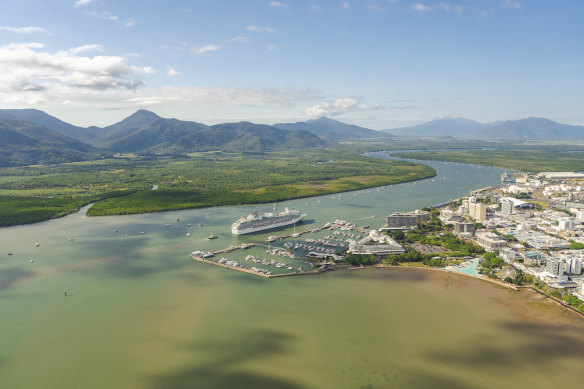
Where’s the sand? Not in Cairns. You’ll have to go a little further north.Credit: Tourism and Events Queensland
If you go to Cairns expecting tropical beaches, you may end up disappointed when you are confronted with the wide expanse of brown tidal mudflats that stretch along the waterfront at Trinity Bay. The good news is you can still find the palm-tree lined stretch of sand you seek at one of the beautiful beaches north of the city, including Machans Beach, Trinity Beach and Holloways Beach.
There’s a whole bar just for watermelon drinks
This being the tropics, refreshing fruit drinks aren’t uncommon. What’s more unusual to find is a whole bar solely devoted to watermelon-inspired cocktails. Named after the owner’s beloved pet bulldog, the menu at Fiestas Cairns includes watermelon spritz, watermelon rosé and watermelon mimosa. On Sangria Sunday you can also purchase a watermelon version of the Spanish favourite served in half a melon.
It gets cold
Although it has a tropical climate – and can be stiflingly hot and humid in summer – it can get chilly in Cairns. In July the mean minimum temperature is around the 17°C mark, so be sure to pack a warm jacket or jumper for the evenings. On a positive note, the maximum temperature is about 25-26°C, so it’s still good for swimming, and perfect for sightseeing and hiking.
Cassowaries can attack
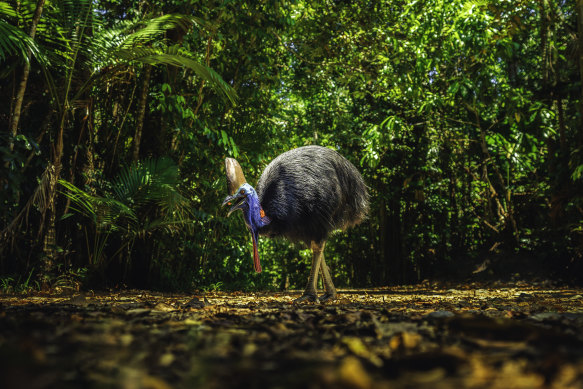
Visitors should be wary of wild cassowaries.Credit: Tourism and Events Queensland
Crocs aren’t the only creatures to be mindful of during a trip to the Tropical North – cassowaries can also cause humans serious injury. Fortunately, such incidents are rare, and usually only occur when a tourist tries to feed them or they’re protecting their chicks. Seeing the prehistoric birds in the wild is a thrill, and there are plenty of places to do it in these parts. Stay at Etty Bay Caravan Park on the aptly named Cassowary Coast and you’re pretty much guaranteed a sighting. Just don’t get too close.
You have to wear a stinger suit
If you’re visiting during stinger season, from around October/November to May/June, it’s important to suit up before getting in the ocean to avoid any nasty encounters with venomous box or Irukandji jellyfish. The safest option is a full-length version, which comes with a hood and mits. You might feel a bit like a seal, but it will make a great Instagram post.
Locals prefer to swim in fresh water
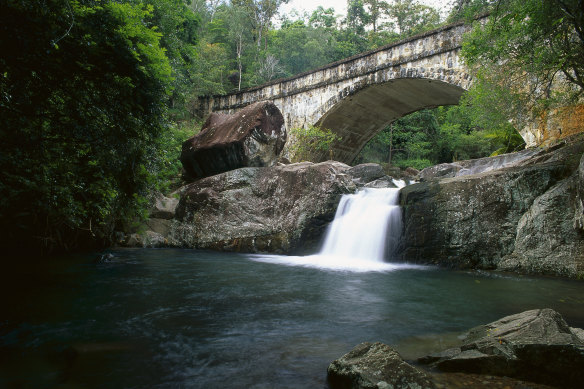
Cascades at Crystal Creek.Credit: Tourism and Events Queensland
While you can take a dip in the large, man-made lagoon on Cairns Esplanade – and many locals do just that – their preferred stinger-free place to swim is the beautiful freshwater waterholes and waterfalls you’ll find just a bit inland. Places like Crystal Cascades and the whimsically named Fairy Falls, only about 20 minutes’ drive from the city, are good places to cool off.
Coconut trees are ‘de-nutted’
Here’s yet another item for the list of things that can kill you in Cairns: coconuts. Fortunately, the clever folk at Cairns Regional Council – who obviously understand the value of keeping tourists alive and out of the headlines – regularly recruit arborists to ‘de-nut’ coconut trees along Cairns Esplanade and beyond.
There’s a castle there
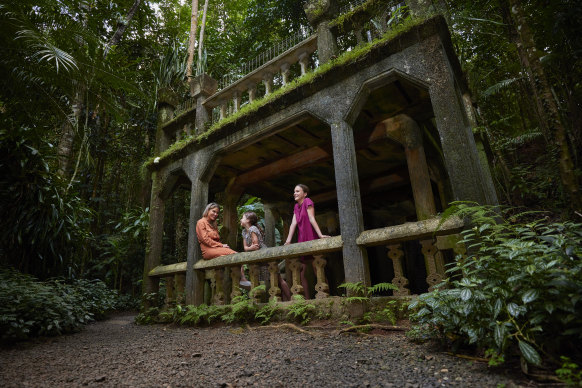
You can visit a 1930s castle flanked by gardens and lush rainforest at Paronella Park.Credit: Tourism and Events Queensland
Castles aren’t exactly a common sight in Australia, so it’s somewhat of a surprise to come across one at Paronella Park, around 1.5 hour’s drive south of Cairns. The project was the dream of Spanish immigrant José Paronella, who arrived in Australia with his young bride Margarita in the 1920s. The entrepreneur began his undertaking with a ‘pleasure garden’ and a reception centre beside Mena Creek Falls, with the attraction opening to the public in 1935 and still going strong.
It’s not just for backpackers
Despite being a backpacker mecca, with plethora of hostels, bars offering wet T-shirt contests and adventure pursuits, Cairns appeals across demographics. There are fine-dining restaurants to satisfy even the fussiest foodies, five-star hotels with sophisticated rooftop bars and some epic play areas for kids, including Muddy’s Playground on Cairns Esplanade and Fig Tree Playground near the cruise ship terminal.
Your tour guide isn’t necessarily going to be an Aussie
When travelling to regional Australia it’s only natural to hope to meet Crocodile Dundee-esque characters, but with so many working holidaymakers descending on Cairns, that’s not always the case. Don’t be surprised if the guide leading your hiking tour or Great Barrier Reef cruise comes from Brazil, Japan, Belgium or one of more than a dozen other eligible countries.
It’s the only place in Australia where two UNESCO World Heritage Sites sit side-by-side
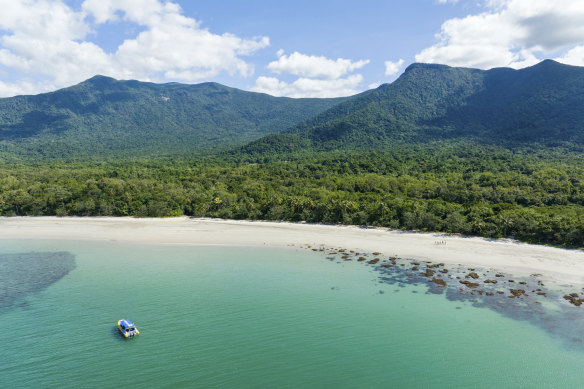
Where the rainforest meets the reef.Credit: Ocean Safari / TEQ
Obtaining a UNESCO World Heritage-listing is no easy feat, let alone having two such wonders right next to each other. The region is known as the place where the rainforest meets the reef, with the oldest and most biologically diverse tropical rainforest in the world — known as the Wet Tropics — aligning with the 2300 kilometre-long Great Barrier Reef.
It’s noisy
With so much diversity, things can get a little loud, so make sure you remember your ear plugs. You won’t be the first person to be woken during the night by a noise that sounds like a woman wailing, only to learn at breakfast it’s actually a bush-stone curlew – a large, ground-dwelling bird with a piercing call. Spectacled flying-foxes, rain whistling frogs and countless other species add to the racket.
The only place in the world where you can swim with dwarf minke whales
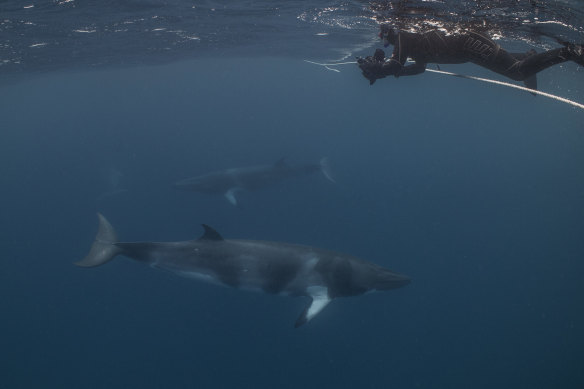
Swim with rare dwarf minke whales off the coast of North Queensland.Credit: Tourism and Events Queensland
Unique is a word that’s overused in the tourism industry, but there is one experience here that truly fits the bill. The Great Barrier Reef is the only place on the planet where you can swim alongside dwarf minke whales, that migrate along Australia’s east coast to the warm waters of the region each year. A handful of operators offer multi-day boat tours in June and July.
The reef isn’t dead
Despite some headlines, the Great Barrier Reef isn’t dead, but it is under pressure from climate change. While the frequency of mass bleaching events is certainly increasing, the Australian Institute of Marine Science (AIMS) recorded the highest amount of hard coral cover in more than three decades in the Reef’s central and northern regions in 2021/22, so it’s still worth doing a day trip.
The airport is close to the city
Cairns Airport is only around six kilometres north of the city centre, so you can be sipping a welcome drink in your hotel lobby within minutes of hopping into your ride. For this we can thank aviation pioneer Tom McDonald, who began flying a Gypsy Moth he’d bought from Qantas from a runway he built on a saltpan there back in the 1920s.
You can get there – and around – by train
There’s no denying Cairns is far (really far!) from the rest of Australia. But for those who love riding the rails, it is possible to get there by train. The Spirit of Queensland takes passengers from Brisbane to Cairns, with the 1681-kilometre journey taking about 25 hours. Once you’re there, the 1960s railmotor The Savannahlander is also a great way to explore the region.
There’s no Aboriginal dot painting, and not all boomerangs come back
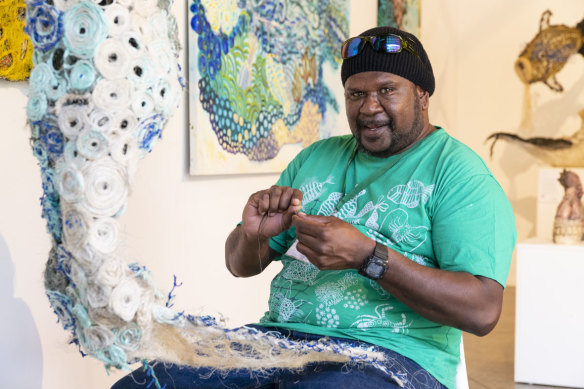
An artist showcases ghost net art at the Cairns Indigenous Art Fair.Credit: Kerry Trapnell Photography
Australia’s Indigenous culture and art is rich and varied, so don’t expect to find Aboriginal dot paintings here — the style originates in Central and Western Australia. Local Indigenous artists are more likely to create ceramic sculptures inspired by fire-making sticks, hand woven ghost-net sculptures and lino-cut prints. There are also more than 30 types of boomerangs made for hunting different animals in Queensland, and only a few are designed to return.
Multicultural cuisine
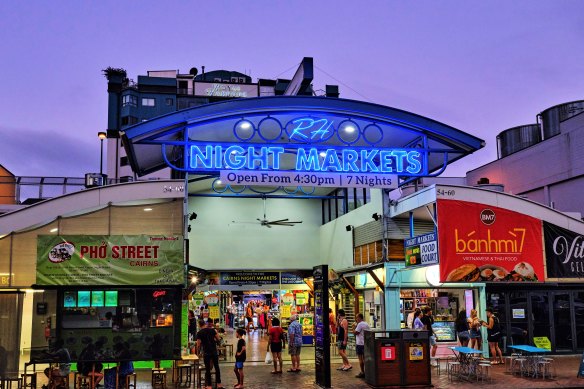
Experience Cairns’ multicultural side through its diverse food at the Cairns Night Markets.
About one in five people who live in Cairns were born overseas, and that multicultural mix is reflected in the food. Slurp down Vietnamese pho and banh mi at Cairns Night Market, nasi goreng at Bayleaf Balinese Restaurant, and tandoori chicken tikka at Marinades Indian Cuisine. Chinese New Year is also huge here, with the city celebrating with a 15-day festival featuring yum cha, lion and dragon dance performances, and a lantern festival within the festival.
See: The best places to eat in Cairns
It boasts Queensland’s highest mountain
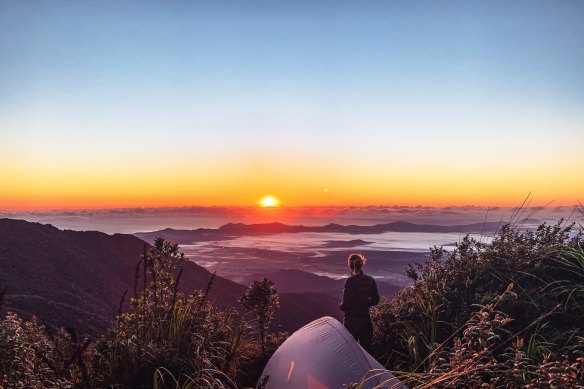
The view from the summit of Mount Bartle Frere.Credit: Tourism and Events Queensland
It’s not all just about reefs and rainforests here. Queensland’s tallest mountain, Mount Bartle Frere, can be found 75 kilometres south of Cairns. At 1622 metres it’s about 600 metres smaller than Mount Kosciuszko, but the views from the summit are arguably as impressive. The climb is not for the faint-hearted and should only be attempted by experienced, fit bushwalkers who are prepared to camp overnight along the way. The period from September to November is ideal to witness the sunrise from the summit, with the least chance of clouds covering the peak.
It’s remarkably inclusive
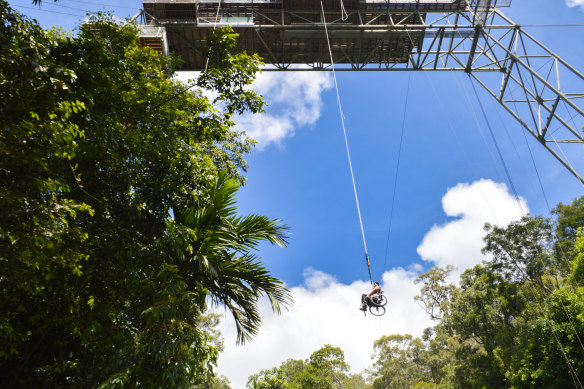
Skypark Cairns has made bungy more accessible.Credit: AJ Hackett
For an adventure destination, the Tropical North is extremely accessible. At Skypark by AJ Hackett, people in wheelchairs can even go bungy jumping – and do so regularly. Quicksilver Cruises has a platform at Agincourt Reef with a water-powered lift hoist that can lower people with disabilities into the water. There are also accessible boardwalks at stops along the Skyrail Rainforest Cableway and Kuranda Scenic Railway and at The Daintree Discovery Centre.
Sign up for the Traveller Deals newsletter
Get exclusive travel deals delivered straight to your inbox. Sign up now.